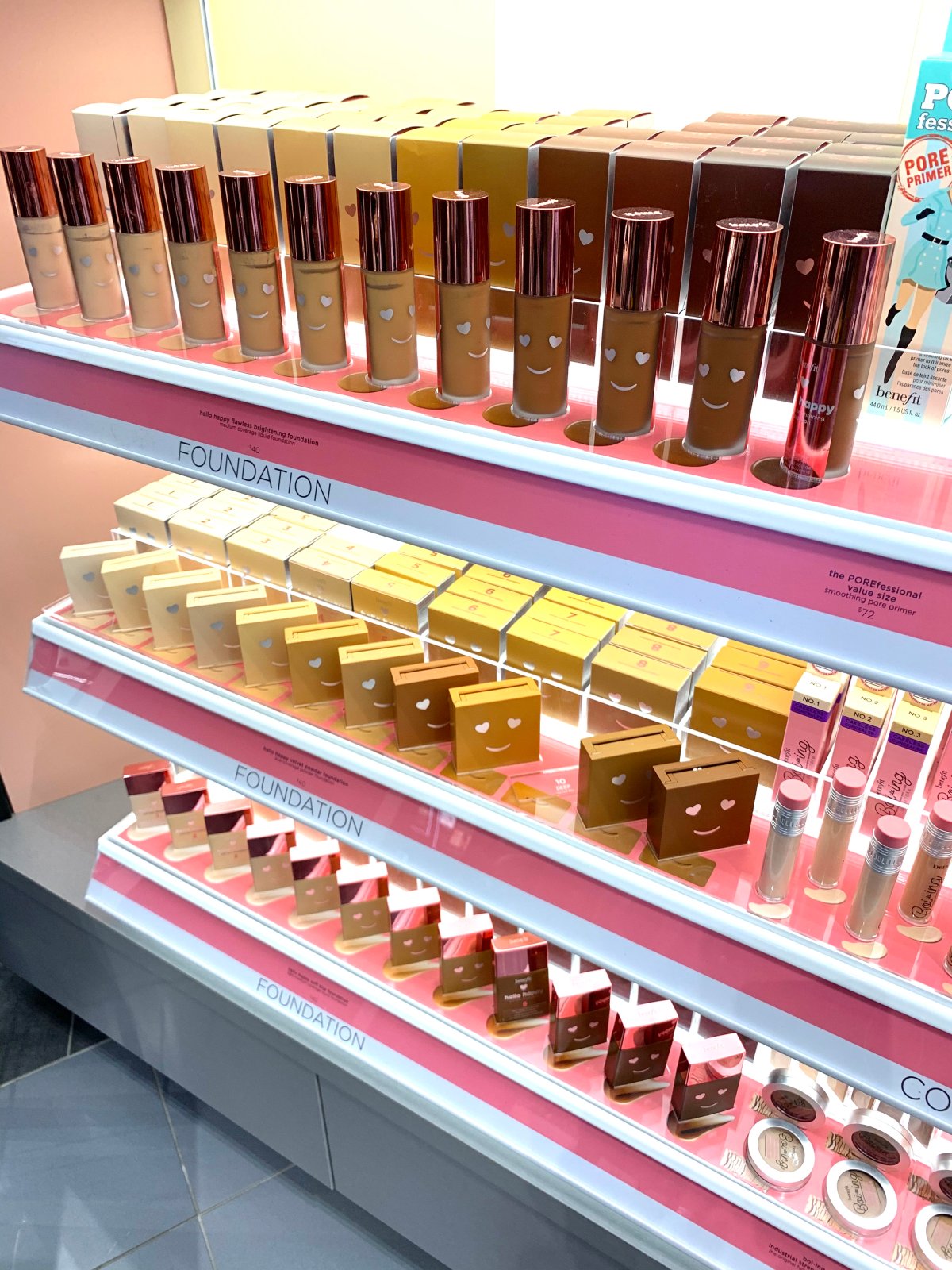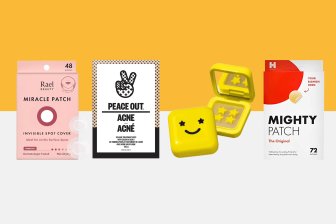Melissa Vincent was 12 years old when she tried on makeup for the first time.

But when she smoothed foundation on her face, it was cakey and heavy, she said. Even worse, it didn’t blend easily into her skin tone.
“I couldn’t find anything that worked for me,” the 25-year-old Toronto resident told Global News.
READ MORE: From acne to dark spots, the most important skincare steps for Black skin
For many people of colour, struggling to find makeup that matches their skin tone is a familiar experience. The beauty industry itself has often come under attack for not being inclusive of its diverse customer base.
Are some brands lagging behind?
In an informal survey in 2018, Toronto-based Makeup for Melanin Girls founder Tomi Gbeleyi polled 5,500 women about the beauty industry. Gbeleyi found 80 per cent of women faced challenges in finding a foundation that matched their skin tone, Glamour Magazine reported.
Nielsen market research group found that African-American women spend $7.5 billion annually on beauty products, and spend 80 per cent more on ethnically targeted beauty products than their non-Black counterparts.
And Canadians spend more on prestige beauty products than any other country in the world, with the NPD group reporting that we spend on average $1.4 billion annually on luxury beauty brands.

In fact, it wasn’t until Grammy-winning musician Rihanna launched her highly acclaimed makeup line Fenty Beauty in 2017 that boasted 50 foundation shades that brands began to rethink their own shade ranges. This has now been dubbed the “Fenty Effect.”
Makeup artist Aniya Nandy who teaches cosmetic management at Humber College in Toronto, says some brands are still lagging behind.
“The brands that are going to make money are the ones that cater to their minority customers like Fenty has,” she said.
Makeup brands like Yves Saint Laurent, Givenchy, Tarte Cosmetics, I.T. Cosmetics and Beautyblender have faced swift backlash for limited shade ranges that excluded nonwhite people.
Although Tarte, I.T. and Beautyblender have since expanded their shade ranges, most major drugstore and prestige brands have only expanded their shade ranges in the last four years in response to consumer pressure generated by Fenty’s debut.
But even when brands do boast 40 colours, people of colour may still find themselves at a loss.

It’s not just about one single colour
Complexion makeup can’t be defined by just one colour, it’s also about undertones and varying pigmentations all over the face, particularly for nonwhite people.
Stellar makeup founder Monika Deol says that when it comes to foundation, more choices doesn’t necessarily mean better results.
“Brands think that having 100 different foundation colours means they are doing a good job, but that’s not necessarily true,” says Deol, who is South Asian.
“It’s about having a number of colours that address each undertone.”
Where you live can also be a factor. Even in a country as diverse as Canada, finding your shade is dependent on whether your local drug store stocks every single shade in a 40 colour brand.
Most Canadians go to Shoppers Drug Mart for their beauty needs, market research group ProdegeMR suggests.
But Toronto makeup artist Elle St. Aubyn said that it’s been a struggle to find her shade at a drugstore.
“I just want to be able to go into the drugstore and find makeup that suits me,” says Aubyn.
“With drugstore brands, even though there are some darker shades, there’s still something missing. There’s a bit of an ashiness. When things aren’t made with people of colour in mind, it’s never quite right.”
In a statement from Shoppers Drug Mart Corporation to Global News, Kelly Jessop, vice president of category management says Shoppers Drug Mart has put an emphasis on listening to customers.
“We understand their current needs and work hard to anticipate what they’ll be looking for in our stores in the future. Industry trends, product innovation, new brands and what resonates with our customers are all factors that play a role in the decision we make.”
READ MORE: ‘Hair Love’: Short film encourages Black girls to embrace their hair
Shoppers Drug Mart Corp. also noted that they’ve recently included the British brand Revolution Makeup in their online store and 600 of their physical locations.
Revolution Makeup “serves to represent and champion a diverse set of customers” and offers over 40 shades in several of their foundation products, according to their site.
Makeup comes down to science
Science and innovation are often underrated in conversations about diversity in the beauty industry. But you can’t create makeup without chemistry, even in clean, natural brands.
Makeup is a formulation of different natural and chemical ingredients. Research and development not only comprises the testing phase, but also the creation and cosmetic chemistry behind a product.
In 2018, the Statista database reported L’Oreal spent just over $1.3 billion on research and development in comparison with Estee Lauder who spent only $267.8 million in the same category.
Liquid foundations are first created in a lab from an emulsion (a combination of oil and water) before pigments are added says Seneca College professor and cosmetic scientist Ivana Knezevic.

There are four industry-standard pigments used to create foundations: red, yellow, black and white.
“When used in different ratios they can achieve a huge range of shades,” said the Toronto-based cosmetic scientist.
But sometimes in order for a brand to create a quality product for darker skin tones reformulation is required, and that’s where things get complicated.
“There’s the cost of the chemical itself,” says Knezevic.
READ MORE: How to take care of Black hair, from heat damage to breakage
“Then there’s the matter of how easy or how complicated it is to include in the formula. There could be quality assurance issues. Maybe under certain conditions the original formula used for past products won’t work. So then the formula has to be reformulated and then that adds costs.”
In 2012, L’Oreal committed to that reformulation process, and African-American cosmetic scientist Balanda Atis created a breakthrough formulation that would become a game-changer for how foundations were created for people of colour.
Atis used ultramarine blue to create darker foundation shades now worn by Lancome ambassador Lupita Nyong’o. In a documentary titled The Spectrum, Atis explained that in order to create deeper shades “you don’t necessarily go blacker, you go deeper in colour.”

In 2014 the L’Oreal Multicultural Lab was established to create products tailored to people of colour in the 140 countries where L’Oreal products are sold.
In the past, brands have been the ones to control the conversation around makeup.
Nandy says that 20 years ago brands used to be more selective about who they were going to market to, whether it was young women or older upper-middle-class women who shopped in department stores.
Back then, brands marketed to their ideal clients.
“Now it’s gone in the direction of marketing to everyone,” Nandy said. “Brands like Glossier are consumer-friendly. They’re telling consumers you don’t have to be a professional makeup artist to look good, and it’s empowering the consumer.”
Twelve years later, Vincent says she is noticing a change when it comes to shopping for makeup as a woman of colour.

She was recently able to find her shade in Glossier’s Perfecting Skin Tint. When she reached out to the brand’s Instagram page to get assistance with colour matching, they mailed her two extra shade options free of charge so that she wouldn’t have to sustain extra shipping costs.
“I don’t think I’ve ever experienced that before. The beauty industry has been a historically racist institution.”
She says many Black people have felt excluded in the beauty industry for decades.
“That gesture felt like a small act of trying to repair that relationship, and it allowed me to have more trust in the product.”
Genelle Levy is a freelance journalist who focuses on culture and social issues. Her work has appeared in USA Today, Toronto Life and TeenVogue. She is also a contributing editor at the creative nonfiction magazine Narratively.com.








Comments